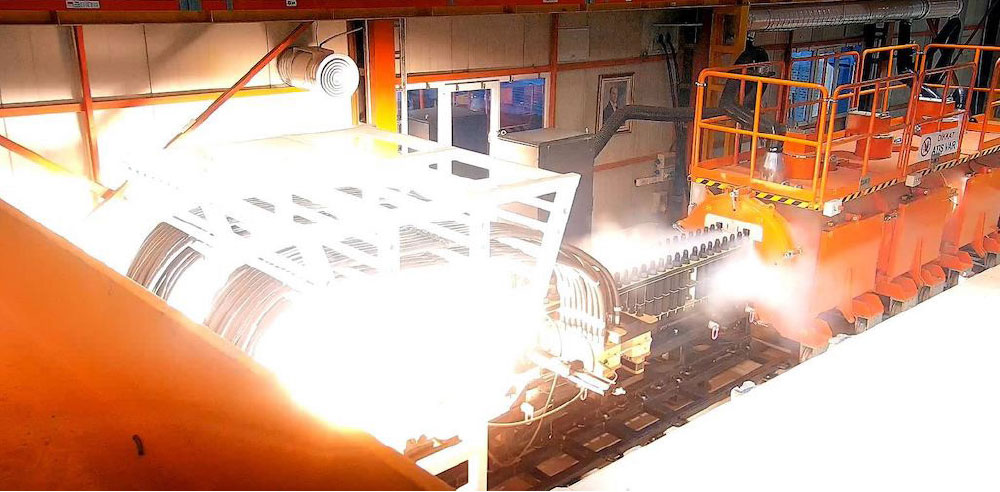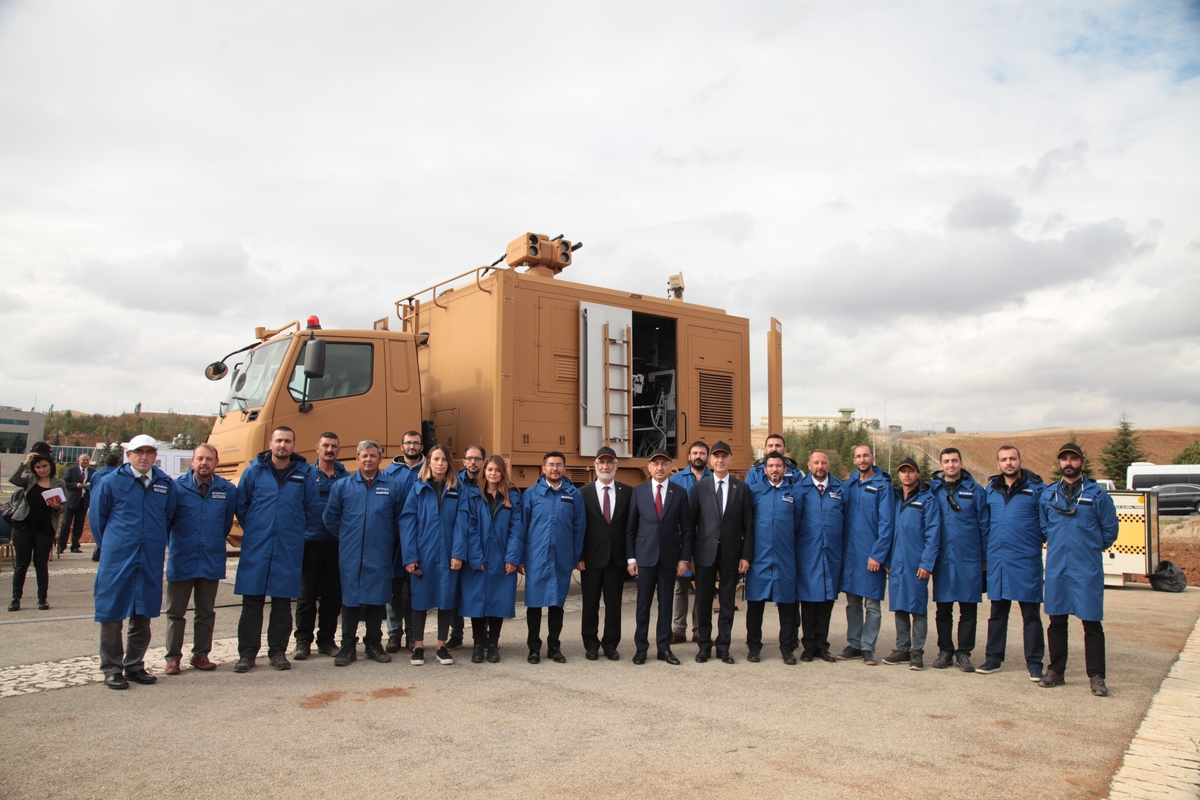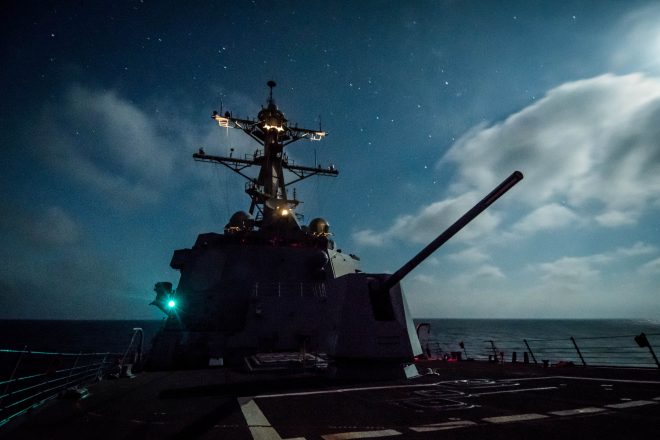Turkey eyes directed-energy weapons as key priority
Turkey’s top military commanders are pushing to prioritize
directed-energy weapon programs following a decade’s worth of industry development in the field, a senior military officer has told Defense News.
“In recent months there have been briefings to update the top command on DEW efforts. Satisfied with where we stand, the command has recommended to establish an understanding to give priority to DEW programs,” the officer said, speaking on condition of anonymity.
Several state-controlled and private Turkish companies have worked on direct-energy technology since 2010, and the positive results have impressed military planners.
“Turkish companies are relatively new in this specialized field, but their work so far has been spectacular,” the officer said. “The first 10 years was relatively challenging. The next decade will see exponential technological sophistication.”
Ozgur Eksi, an Ankara-based defense analyst, said that from an operational point of view, directed-energy weapons are meant to increase fire power, serve as a deterrent, and complement armed and unarmed drone warfare development.
“Drone warfare architecture may be the most critical operational use, especially for asymmetrical warfare inside Turkey or in cross-border operations [in Syria and Iraq],” Eksi said.
Turkey has been fighting Kurdish insurgents since 1984 — a conflict that has seen nearly 50,000 people die, including civilians. The Turkish military maintains an operational presence in northern Iraq and Syria, where Kurdish militants maintain strongholds.
As each Turkish-made directed-energy system becomes combat-proven, export potential will increase, a procurement official told Defense News. He said potential foreign customers include Azerbaijan, Pakistan, Qatar and some Southeast Asian countries.
“Turkish companies initially followed achievements of Chinese and Israeli DEW specialists,” according to a senior directed-energy weapons engineer working for a local state-controlled company. “But now their programs tend to evolve technologically independent. The next phase will focus more on advanced models and new systems.”
State-controlled missile-maker Roketsan unveiled in 2019 its first homemade directed-energy weapon, the Alka, that can destroy or disable hostile drones. Company officials say the effort was part of a response to the surge in drone attacks targeting Turkish troops.
The Alka is equipped with both a 50-kilowatt laser and electromagnetic systems to either destroy or disable drones. It purportedly uses automatic target recognition with both electro-optical and radar detection to simultaneously track multiple targets. The system is touted as being able to disable a swarm of drones at a range of 4,000 meters; destroy a target with a laser at 500 meters; and destroy a target at 1,000 meters with its electromagnetic weapon. It can also reportedly track targets at speeds as high as 150 kph with a precision of 8 milimeters from 1,000 meters away.
It took Roketsan five years to develop the system. Its engineers are now working to integrate the Alka into a portable system so it can be moved around with a dedicated truck.
“The mobile unit will be ideal to protect troops and operations, while the stationary system will offer protection for headquarters, bases, ships and other strategic points,” a Roketsan engineer said. One Alka unit has already been deployed to protect Roketsan’s production facility near Ankara.
On Aug. 4, 2019, an Alka system mounted on an off-road armored car shot down a Chinese-made Wing Loong II UAV in Misrata, Libya. In the Libyan civil war, Turkey supports the internationally recognized Government of National Accord.
Meanwhile, military electronics specialist Aselsan, Turkey’s largest defense company, has developed the LSS laser defense system. The LSS primarily targets mini- and micro-drones up to 500 meters away as well as improvised explosive devices up to 200 meters away. The stationary system can be used on naval platforms, power plants, air bases, border patrol stations and convoy routes.
Some of the system’s features include infrared and high-definition cameras, a laser range finder, an optical focuser, a multiple target-tracking capability, laser blanking signal output (used to benefit radio frequency capabilities), and laser masking (meant to protect a system from residue left behind after a laser is used).
“LSS was developed and manufactured nationally without being subject to any license or export permit from a foreign manufacturer,” an Aselsan official said. “Soon the system will be in intense use in the Turkish military, especially in anti-insurgency operations in Syria and Iraq.”
In 2019, Aselsan inaugurated its Electromagnetic Launch System Development Laboratory, equipped with a flash X-ray capability, a ballistic projectile recovery tank for high-energy tests, a high-speed camera system, sensors and local power supplies.
That same year, the locally developed, vehicle-mounted fiber laser system ARMOL completed its acceptance tests and entered the military’s inventory. The 400-kilogram (881-pound) laser system was mounted on a Cobra armored vehicle, along with target acquisition hardware and a control terminal.
In 2020, the governmental procurement agency Presidency of Defence Industries spearheaded efforts to launch the now-operational Laser Technologies Center of Excellence — another sign of Turkey’s growing footprint in the field of directed energy.
Turkey’s top military commanders are pushing to prioritize directed-energy weapon programs following a decade’s worth of industry development in the field, a senior military officer has told Defense News.

www.defensenews.com













